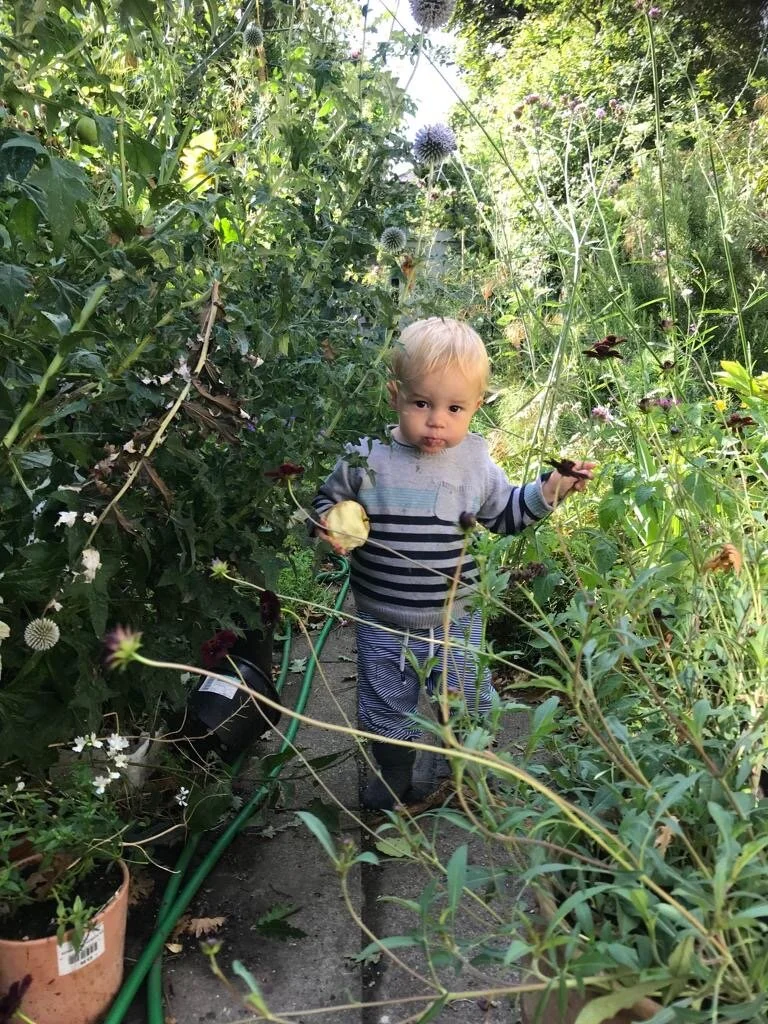When Toby and I were looking for our home, we visited so many places that were more spacious or already renovated, but all with no garden or only a small patch of paving at the back. In the end, we opted for a place that’s only slightly wider than a train carriage and that took 2 years to do up, with a completely rotten roof, illegal wiring and mould on all the walls. In the end, we bought a garden.
Our garden is 13ft wide and 60ft long – effectively a verdant bowling alley but a good stretch of ground. It receives sun in the spring when the trees are bare, but has a high wall on one side and a fence on the other and is narrow enough that a sunbather has to put down their mojito to move their chair across the patio every 40 minutes. When Monty Don walks us down his ‘cricket pitch’, a liminal space between his gardens which he block plants (beautifully) with anything from Acanthus to wildflowers, I watch and think ‘that’s pretty much the size of our entire plot’. A long corridor with striking planting looks stunning, but when it’s all you have to work with there’s a lot more you need to get from it: a patio, grassy space for Arthur to run around, a veg patch and of course plenty of space to explore my ever-growing list of favourite flowers. Most of these do best in full sun and every centimetre of the garden’s layout has been a weary territorial battle with myself. A battle between my love of alpines and my love of alliums, my need to grow carrots and my desire to grow cardoons and, most painful of all, between Arthur’s wish for a sandpit and Toby’s need for a barbeque, neither of which have anything to do with gardening and therefore qualify as a waste of good fertile ground in my book.
In the end, we have divided the garden into 4 sections: a patio, flower beds with a bit of lawn, a vegetable section and the somewhat blighted nether region of dry shade beneath a walnut tree. This last area presents the ultimate in difficult planting, which houses our compost heap, a tool shed and my best efforts at woodland planting. In each of these areas my desire to cram in as many plants as possible defies both practicality and good taste. We finally had the patio levelled and redone this spring and after 24 hours of it looking elegant and tidy I had covered it back over with pots full of tulips and spring bedding whilst waves of seedlings and unpromising pots of dahlias colonise the outdoor ‘dining table’. In the raised veg beds I have tried over the years to fit flowers for cutting around the borders, often to comically disastrous effect, as in the case of my wallflowers and cabbage bed (see below).
But there are some big benefits to having a small garden. You get to know the space well and can enjoy the challenge of making the whole area work as much as possible. In the dark winter days, the first sparks of spring are close enough to the window to be enjoyed. In the recent baking heat, a bit of shade from surrounding trees has been a blessing both for us and the plants.
Our flower beds suffer inevitably from the incompatibility of a plant addict with a small canvas and any kind of colour scheme, but for now I have decided that enjoying exploring new plants is more important. I should learn to re-gift plants but I grow too attached to part with them. My brilliant, scarlet poppy ‘Beaty of Livermere’ spends May gunning away, enthusiastically covered in huge red flowers that make your eyes water next to the subtleties of Allium schubertii and Dicentra spectabilis, like someone’s embarrassing cousin who didn’t get the memo on dress code. I shall develop good taste when I have the space for it. Or when I have grown every plant I can think of under the sun and settled on some favourites.
For now, our garden is chaotic, much used and well-loved. It’s imperfect, and whilst that’s largely down to me, I like to blame the conditions I work with. It has taught me about the joy of care, the illusion of control, and above all the necessity of letting go.

